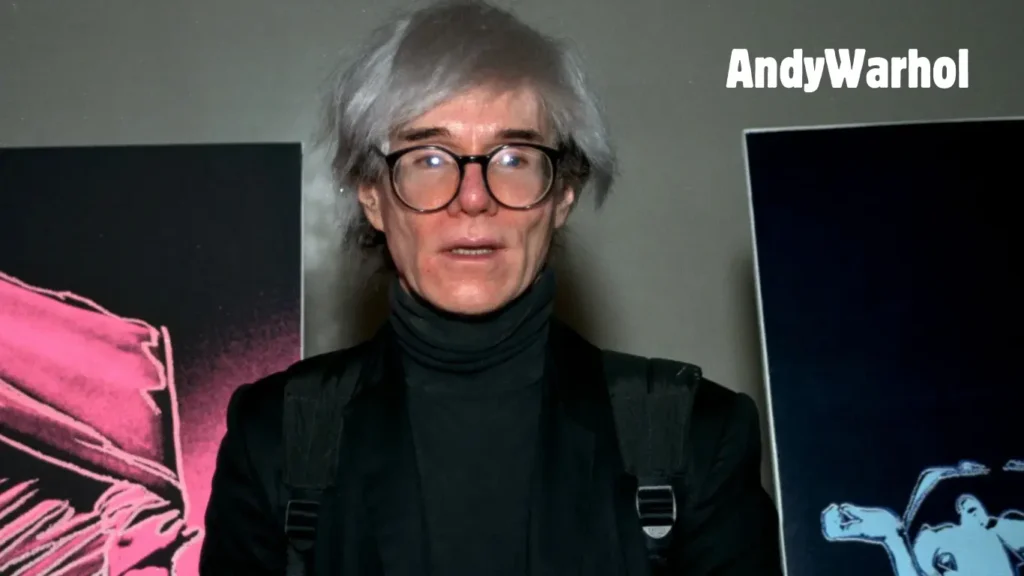AndyWarhol, born Andrew Warhola on August 6, 1928, in Pittsburgh, Pennsylvania, remains one of the most influential artists of the 20th century. His unique approach to art, blending consumerism with creativity, has left an enduring legacy. Warhol was not just a painter; he was a visionary who saw art in everyday life, transforming the ordinary into the extraordinary.
Early Life and Artistic Beginnings
Coming from a working-class family of Slovakian immigrants, Warhol’s childhood was shaped by financial struggles and health issues. As a child, he suffered from Sydenham’s chorea, a nervous system disease that kept him bedridden for long periods. This period of isolation fueled his love for drawing and pop culture.
He spent hours sketching, listening to the radio, and collecting pictures of movie stars. These early experiences laid the foundation for his obsession with celebrity culture, a theme that would dominate his later work.
Warhol studied commercial art at Carnegie Institute of Technology (now Carnegie Mellon University), graduating in 1949. He moved to New York City, where he started working as a commercial illustrator for magazines such as Vogue, Harper’s Bazaar, and The New Yorker.
His distinctive blotted-line technique and rubber stamp method gained attention, making him a sought-after illustrator in the advertising industry.
The Rise of Pop Art
The 1950s and early 1960s marked a shift in Warhol’s career. He transitioned from commercial illustration to fine art, inspired by the booming consumer culture of post-war America.
Warhol became a leading figure in the Pop Art movement, a style that challenged traditional artistic norms by incorporating imagery from advertising, comic strips, and popular media.
In 1962, Warhol debuted his famous Campbell’s Soup Cans series. These 32 canvases, each featuring a different flavor of Campbell’s soup, questioned the distinction between high art and mass production.
His use of repetition and vibrant colors became his signature style, reflecting the consumerism and branding that defined American society.
Celebrity Culture and Iconic Works
Warhol’s fascination with fame led him to create portraits of cultural icons, including Marilyn Monroe, Elvis Presley, and Elizabeth Taylor.
His Marilyn Diptych (1962) is one of the most celebrated works in modern art, presenting multiple silkscreen images of Monroe in bold, contrasting colors. This artwork, created shortly after Monroe’s death, explores themes of fame, mortality, and media saturation.
Warhol’s Brillo Boxes, Coca-Cola Bottles, and Dollar Bills further blurred the lines between consumer goods and fine art, making everyday objects the subject of high art. His ability to transform the mundane into the extraordinary cemented his status as a revolutionary artist.
The Factory: A Hub for Creativity
Warhol’s studio, known as The Factory, became the epicenter of New York’s avant-garde scene in the 1960s. It was a gathering place for artists, musicians, writers, and socialites, including Mick Jagger, Edie Sedgwick, and Lou Reed.
The Factory was not just a workspace; it was an artistic movement in itself, where creativity and experimentation thrived.
Warhol’s experiments extended beyond painting. He ventured into filmmaking, producing over 60 films, including Chelsea Girls (1966), Empire (1964), and Blow Job (1964). These avant-garde films often featured long, unedited takes and unconventional storytelling, further pushing the boundaries of traditional art forms.
Shooting and Transformation
In 1968, Warhol’s life took a dramatic turn when radical feminist Valerie Solanas shot him in his studio. The attack left him severely injured, leading to lasting physical and psychological effects. Although he survived, Warhol became more reclusive, shifting his artistic focus to commissioned portraits and business ventures.
During the 1970s and 1980s, Warhol continued to explore themes of celebrity and consumerism, creating portraits of figures like Mick Jagger, Muhammad Ali, and Debbie Harry. He also collaborated with younger artists, including Jean-Michel Basquiat and Keith Haring, bridging the gap between generations of creative minds.
Warhol’s Legacy and Impact
Warhol’s influence extends beyond the art world. His ability to merge art with commercialism paved the way for contemporary artists like Jeff Koons, Takashi Murakami, and Damien Hirst. His work anticipated the rise of social media, where self-branding and mass production of images dominate.
The Andy Warhol Museum in Pittsburgh, the largest museum dedicated to a single artist in the U.S., preserves his legacy, housing thousands of his works, personal artifacts, and film archives. Warhol’s famous quote, “In the future, everyone will be world-famous for 15 minutes,” has never been more relevant in the digital age.
Conclusion: The Eternal Relevance of Warhol
Andy Warhol’s art was more than just vibrant images of soup cans and celebrities; it was a mirror reflecting the culture of his time. His work challenged conventions, redefined artistic expression, and predicted the media-driven world we live in today.
Warhol’s ability to see art in the ordinary and elevate it to extraordinary heights continues to inspire artists, designers, and cultural thinkers across the globe.
Whether through his silk-screen prints, films, or philosophies, Warhol’s impact remains as vivid and influential as ever.
His art was not just about aesthetics; it was about understanding society, consumerism, and the human obsession with fame. As we navigate the modern digital landscape, Warhol’s vision of art and media remains more relevant than ever.


